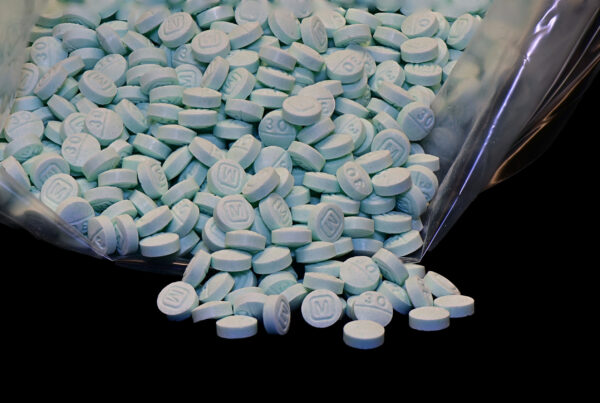A SpaceX launch ended with a rocket self-destructing high over the South Padre Island launch pad where its journey began.
Many observers called the second test launch of Starship a failure for SpaceX and wondered how the incident would affect the company’s plans to send reusable rockets to the moon and back, under contract to NASA.
But Eric Berger, who covers space for the tech site Ars Technica, says the way the flight ended gives SpaceX invaluable knowledge about how to redesign and re-engineer its systems for the future. Listen to the interview above or read the transcript below.
This transcript has been edited lightly for clarity:
Texas Standard: I noticed a lot of the headlines immediately after the launch saying ‘a SpaceX fail’ and indeed last weekend’s test flight comes seven months after the first Starship test, which resulted in a badly damaged launch pad.
You wrote an interesting piece for Ars Technica – Sorry, doubters: Starship actually had a remarkably successful flight. What explains this difference in perception over what happened with Starship?
Eric Berger: I mean, look, they blew up their hardware very spectacularly. And so the natural inclination is to look at that as a failure. And I totally understand that.
But what you’ve got to understand is that SpaceX designs its rockets in a different way than NASA or most other conventional companies; it builds these Starships for pennies on the dollar compared to regular rockets. And it designs them in a process called iterative design. And that basically means that you want to fly as quickly as possible, get data, learn how your system works, and find what fails and what doesn’t.
And then you address those problems and iterate the design going forward. It’s faster, and it’s cheaper. But the cost of that is you have to accept some public failure like what we saw on Saturday.
The good news for SpaceX is that the first stage – the super heavy booster, which has a preposterous 33 rocket engines all clustered together in a tight space – worked flawlessly.
And that’s a big change from the original test, as I recall.
Yeah, in the original test six engines failed. It didn’t make its full burn. And so they clearly have made a lot of progress on that. And that is the most brawny part of the rocket that they seem to have gotten nailed down on just the vehicle’s second flight. So that was really a big success.
» GET MORE NEWS FROM AROUND THE STATE: Sign up for Texas Standard’s weekly newsletters
One of the things that makes Starship so revolutionary is this idea of reusable rockets – a rocket that returns to Earth and can be used on future launches. And clearly, if you have a rocket that was forced to destroy itself, as we saw over the weekend, we’re not at reusability yet.
What’s there to learn from a test that ends up destroying the spacecraft? Does SpaceX have more rockets for future tests?
Yes, SpaceX has about half a dozen Starships and super boosters on the ground, and most of them are actually complete or almost complete. So they could be ready to fly in as soon as another month or two.
So what they learned is they got through the entire burn of the first stage. It separated from the upper stage, which pulled away. And then where it was actually lost is they ignited a subset of the engines – I think it was three – to make a controlled atmospheric burn, to come back down, to make a vertical landing in the ocean.
Now, what probably happened is that almost all of the fuel was gone. And this rocket is, you know, 60, 70 miles up in the sky; it’s swinging back and forth, and there’s not much propellant left in the tanks. And so it turns out to be really a challenge to get the oxidizer and the methane propellant all the way to the bottom into the engine.
So if you think about the rockets falling, the natural propensity of propellant is actually to rise to the top of the vehicle. The engines are at the bottom. That was probably the problem.
So what happens next for Starship?
Well, they fly it again. I mean, they got all of this data. They did this other really crazy thing where they’re trying to maximize the ability of the amount of payload that the rocket can carry to orbit. It already can lift more than the Saturn V could, the rocket that took astronauts to the moon. So it’s already the most powerful rocket. They’re trying to squeeze more performance out of it.
They did something really crazy called hot staging. What that means is that – so the second stage, Starship is attached to the rocket. At some point it pulls away; it goes on to space. The first stage comes back to Earth. They ignited the engines of Starship – the upper stage – before it actually separated from the lower stage because you have more momentum that way, going on to space. And that maneuver appears to have been largely successful because Starship pulled away and completed most of its burn toward orbit before there was some problem with it and it exploded.
So that they got a tremendous amount of data about both the rocket first stage and the upper stage. And so they’re going to take all of those learnings going forward. And what I’ve heard is that potentially the biggest issues were not with the hardware, but with the software that kind of guides the flight. And so those should be changes that are a little bit more straightforward for the third attempt.
» FROM TEXAS PUBLIC RADIO: SpaceX’s second Starship launch met with both concern and excitement in Laguna Madre area
Do you think these two Starship tests are going to have an effect on the NASA moon mission?
Well, NASA’s watching this closely because Starship is absolutely on the critical path. So, yes, this this will have an impact. NASA is, by and large, pretty pleased with these test results. They understand how SpaceX operates, and they certainly don’t see these as failures. They see them as successful test flights.
What SpaceX is building toward is a rapid cadence of Starship launches. They will get to the point where they can launch these once a week. And so this is just part of that process of getting early data. And again, it’s all part of the iterative design philosophy.
You point out that a lot of the reaction to the SpaceX launches that don’t go as planned has more to do with Elon Musk, right?
Absolutely. I mean, he has been an increasingly controversial figure, especially since he acquired Twitter and rebranded it X.
He’s made no secret of his politics, made some very controversial comments about Jews and other things as well. And so there’s a lot of people in the United States and around the world who don’t like Elon Musk at all and have a very negative view. And so I think there’s some sense of schadenfreude when they see a SpaceX rocket blowing up.
But that really misses the point when it comes to SpaceX. This is the most dominant launch company in the world. They’ve landed more rockets – 230 in the last five years – than all of the other companies in the United States, Europe and everywhere but China combined. So, this is a company that knows what it’s doing in space. But clearly some people would like to see Elon Musk fail.














